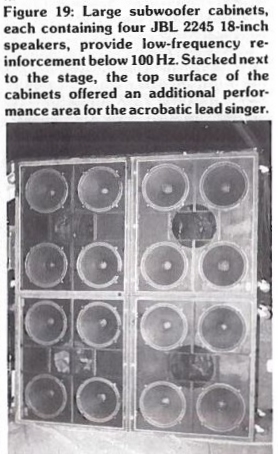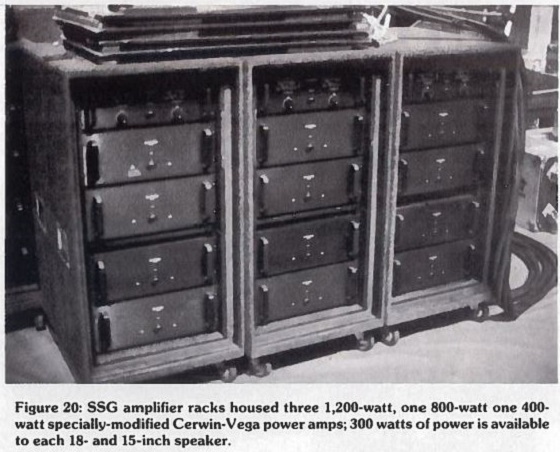
Conclusions: Performance Sound
With enough consoles and digital signal processing gear in this one touring system to fill a couple of audio rental supply houses, one begins to wonder where the trend towards extensive hardware for live-performance use will stop.
A concert sound setup such as this one is extremely costly, and is far beyond the average system on the road today in terms of its complexity.
However, the extra care taken to assemble the audio tools required to achieve live duplication of recorded music deserves more than a few compliments.
The concert that this writer attended at the Arizona State University Activity Center featured an extremely well-crafted mix, with subtle nuances and effects not often heard in live rock concert settings, particularly of the one-nighter variety.
The stage-area submixers were perhaps instrumental in achieving the excellent end result.
The SSG system presented the detailed mix to a lively college-age crowd with power to spare.
Full-frequency coverage was well distributed throughout the listening area.
Twenty years ago, a “rock and roll” show had one soundman, perhaps 12 stage microphone inputs, and whatever house-sound cluster was available that night.
As I sat and listened to six experienced board operators mixing down 136 inputs on $300,000 worth of consoles and effects into high-fidelity hanging speaker arrays, the distance that the concert sound industry has traveled in those two decades was remarkable to behold.
Now, if we can only “fix” those sporting-arena acoustics!
Editor’s Note: This is a series of articles from Recording Engineer/Producer (RE/P) magazine, which began publishing in 1970 under the direction of Publisher/Editor Martin Gallay. After a great run, RE/P ceased publishing in the early 1990s, yet its content is still much revered in the professional audio community. RE/P also published the first issues of Live Sound International magazine as a quarterly supplement, beginning in the late 1980s, and LSI grew to become the monthly publication that continues to thrive to this day.
Our sincere thanks to Mark Gander of JBL Professional for his considerable support on this archive project.


